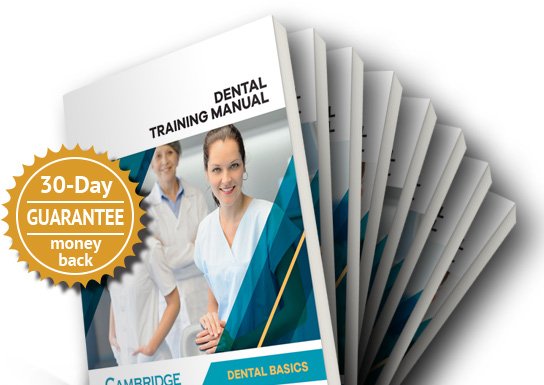Periodontal Disease Classification System
I. Gingival Diseases
A. Dental plaque-induced gingival diseases
(Can occur on a periodontium with no attachment loss or on a periodontium with attachment loss that is not progressing)1. Gingivitis associated with dental plaque only
a. without other local contributing factors
b. with local contributing factors (See VIII A)
2. Gingival diseases modified by systemic factors
a. associated with the endocrine system
1) puberty-associated gingivitis
2) menstrual cycle-associated gingivitis
3) pregnancy-associated
a) gingivitis
b) pyogenic granuloma
4) diabetes mellitus-associated gingivitis
b. associated with blood dyscrasias
1) leukemia-associated gingivitis
2) other
3. Gingival diseases modified by medications
a. drug-influenced gingival diseases
1) drug-influenced gingival enlargements
2) drug-influenced gingivitis
a) oral contraceptive-associated gingivitis
b) other
4. Gingival diseases modified by malnutrition
a. ascorbic acid-deficiency gingivitis
b. other
B. Non-plaque-induced gingival lesions
1. Gingival diseases of specific bacterial origin
a. Neisseria gonorrhea-associated lesions
b. Treponema pallidum-associated lesions
c. streptococcal species-associated lesions
d. other
2. Gingival diseases of viral origin
a. herpesvirus infections
1) primary herpetic gingivostomatitis
2) recurrent oral herpes
3) varicella-zoster infections
b. other
3. Gingival diseases of fungal origin
a. Candida-species infections
1) generalized gingival candidosis
b. linear gingival erythema
c. histoplasmosis
d. other
4. Gingival lesions of genetic origin
a. hereditary gingival fibromatosis
b. other
5. Gingival manifestations of systemic conditions
a. mucocutaneous disorders
1) lichen planus
2) pemphigoid
3) pemphigus vulgaris
4) erythema multiforme
5) lupus erythematosus
6) drug-induced
7) other
b. allergic reactions
1) dental restorative materials
a) mercury
b) nickel
c) acrylic
d) other
2) reactions attributable to
a) toothpastes/dentifrices
b) mouthrinses/mouthwashes
c) chewing gum additives
d) foods and additives
3) other
6. Traumatic lesions (factitious, iatrogenic, accidental)
a. chemical injury
b. physical injury
c. thermal injury
7. Foreign body reactions
8. Not otherwise specified (NOS)
II. Chronic Periodontitis (slight: 1-2 mm CAL; moderate: 3-4 mm CAL; severe: > 5 mm CAL)
A. Localized (< 30% of sites are involved)
- Chronic localized slight periodontitis
- Chronic localized moderate periodontitis
- Chronic localized severe periodontitis
B. Generalized (> 30% of sites are involved)
- Chronic generalized slight periodontitis
- Chronic generalized moderate periodontitis
- Chronic generalized severe periodontitis
III. Aggressive Periodontitis (slight: 1-2 mm CAL; moderate: 3-4 mm CAL; severe: > 5 mm CAL)
A. Localized (< 30% of sites are involved)
- Aggressive localized slight periodontitis
- Aggressive localized moderate periodontitis
- Aggressive localized severe periodontitis
B. Generalized (> 30% of sites are involved)
- Aggressive generalized slight periodontitis
- Aggressive generalized moderate periodontitis
- Aggressive generalized severe periodontitis
IV. Periodontitis as a Manifestation of Systemic Diseases
A. Associated with hematological disorders
1. Acquired neutropenia
2. Leukemias
3. Other
B. Associated with genetic disorders
1. Familial and cyclic neutropenia
2 Down syndrome
3. Leukocyte adhesion deficiency syndromes
4. Papillon-Lefèvre syndrome
5. Chediak-Higashi syndrome
6. Histiocytosis syndromes
7. Glycogen storage disease
8. Infantile genetic agranulocytosis
9. Cohen syndrome
10. Ehlers-Danlos syndrome (Types IV and VIII)
11. Hypophosphatasia
12. Other
C. Not otherwise specified (NOS)
V. Necrotizing Periodontal Diseases
A. Necrotizing ulcerative gingivitis (NUG)
- Localized necrotizing ulcerative gingivitis
- Generalized necrotizing ulcerative gingivitis
B. Necrotizing ulcerative periodontitis (NUP)
- Localized necrotizing ulcerative periodontitis
- Generalized necrotizing ulcerative periodontitis
VI. Abscesses of the Periodontium
A. Gingival abscess
B. Periodontal abscess
C. Pericoronal abscess
VII. Periodontitis Associated With Endodontic Lesions
A. Combined periodontic-endodontic lesions
VIII. Developmental or Acquired Deformities and Conditions
A. Localized tooth-related factors that modify or predispose to plaque-induced gingival diseases/periodontitis
1. Tooth anatomic factors
2. Dental restorations/appliances
3. Root fractures
4. Cervical root resorption and cemental tears
B. Mucogingival deformities and conditions around teeth
1. Gingival/soft tissue recession
a. facial or lingual surfaces
b. interproximal (papillary) 2. Lack of keratinized gingiva
3. Decreased vestibular depth
4. Aberrant frenum/muscle position
5. Gingival excess
a. pseudopocket
b. inconsistent gingival margin
c. excessive gingival display
d. gingival enlargement (See I.A.3. and I.B.4.)
6. Abnormal color
C. Mucogingival deformities and conditions on edentulous ridges
1. Vertical and/or horizontal ridge deficiency
2. Lack of gingiva/keratinized tissue
3. Gingival/soft tissue enlargement
4. Aberrant frenum/muscle position
5. Decreased vestibular depth
6. Abnormal color
D. Occlusal trauma
1. Primary occlusal trauma
2. Secondary occlusal trauma


